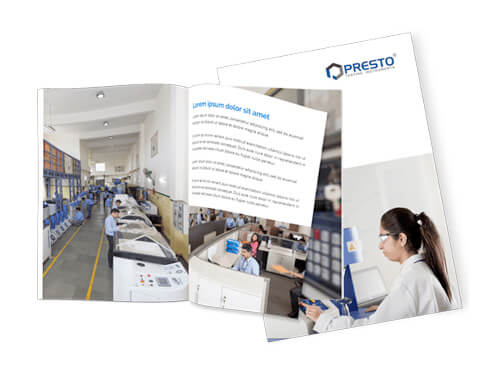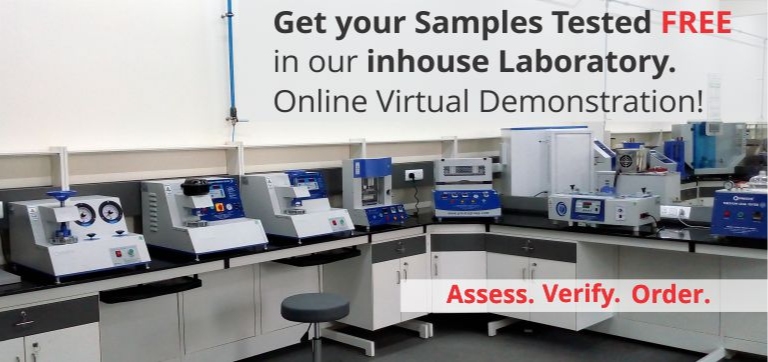Ensure seamless transparency with Presto’s Polariscope

Gaurav Malhotra
02-07-2024
Transparent materials often go unseen or untested during scientific procedures. A polariscope tester helps in checking the optical properties of such materials - otherwise hard to assess. They are widely used in industries where research is an important segment, like education. It checks materials under stress.
.jpg)
Understanding the Polariscope Tester
It is an instrument used to analyze the patterns a material undergoes under stress. It is an optical tester. It works based on birefringence, in which varied stress conditions cause varying optical effects in the material. When observed with polarized light, stressed areas inside the material produce different interference patterns that offer information about the level and distribution of stress.
.jpg)
The Various Applications of Polariscope Testers
Polariscope testers are essential tools with a wide range of applications in various sectors and research fields. Here are some of their principal uses:
1. Quality assurance
Polariscopes are used by manufacturers to detect internal stress-related faults early in the manufacturing process, ensuring product reliability and preventing failures in the final product. This is especially crucial when creating tempered glass or plastic components, as invisible tensions can cause fracture.
2. Innovation and Development
Researchers use polariscope data to understand how different materials react under different conditions, which helps them develop new materials with improved qualities such as increased strength and endurance. They can improve the strength of materials by evaluating stress patterns.
4. Forensic Investigations
In forensic science, polariscopes are used to analyze glass fragments and other clear evidence to establish the cause of failure or fracture. This is critical in accident investigations and crime scene examinations, allowing professionals to reconstruct the sequence of events that resulted in material breakdown.
CALIBRATION STEPS: (ACCORDING TO THE POLARISCOPE MANUFACTURER)
Setting the Zero Position: First, position the polarizers so they are entirely crossed, with one polarizer set to 0 degrees and the analyzer set to 90 degrees relative to each other. This setup practically prevents any light transmission via the polariscope.
.jpg)
Adjusting the Analyzer: Gradually rotate the analyzer, or the polarizer closest to the sample, until you reach maximum brightness. This implies that the polarizers are properly aligned, allowing the most light to pass through the sample.
Using Reference Materials: As a standard reference, choose a well-known birefringent material with certain optical properties, such as a calcite crystal. Insert the material into the polariscope and adjust the analyzer until the expected interference colors or patterns appear.
Verification Procedure: Check the observed interference colors or patterns against established reference charts or known values. This phase confirms that the polariscope's calibration is accurate by comparing the findings to those expected.
.jpg)
Documentation and Maintenance
Maintaining Records: Keep detailed records of calibration dates, processes, and outcomes. This documentation ensures traceability and makes it easier to spot differences over time, hence improving measurement reliability.
Regularity: Regular inspection ensures seamless and accurate results. It is based on the usage of the product. Make a schedule keeping in mind the humidity/temperatures.
Professional Calibration Services: For complex or highly precise instruments, periodic calibration by skilled professionals is recommended. This assures compliance with industry norms.
FAQs about Polariscope Testers
1. Why do we need to put materials under stress analysis?
Answer 1) Engineers and designers require stress analysis to ensure accuracy and durability. By subjecting materials to controlled stresses, they can accurately assess their tensile strength, compressive strength, and resistance. This quantitative information strengthens and enhances the design process, helping to mitigate risks associated with product failure.
2. Can polariscope testers detect hidden defects?
Answer 2)
1. Research confirms that polariscope testers are effective in detecting material defects by revealing stresses and irregularities that evade direct vision. Through the analysis of light transmission in polarized conditions, they can pinpoint areas within materials which show changed properties like birefringence.
2. Such anomalies are indicative of capacity defects consisting of cracks, voids, or residual stresses, that can compromise the fabric`s structural integrity and operational performance.
3. Consequently, polariscopes function as critical equipment in numerous industries, which include aerospace, automotive, and manufacturing, wherein making sure the protection and reliability of additives and merchandise is paramount. Their capability to perceive hidden defects aids in improving excellent manipulation measures and optimizing fabric evaluation processes, contributing to standard operational performance and product longevity.
Want to know the Polariscope price? Contact us through a phone call at +91 9210903903 or directly drop us an e-mail at info@prestogroup.com.
you may also like
- The Ultimate Guide to Universal Testing Machines (UTM)
- Guide to Bursting Strength Tester: Working, Benefits & Price
- Ultimate Guide to Melt Flow Index Tester: Operations, Advantages, and Uses
- A Complete Guide to Box Compression Tester: Methods & Applications
- Hot air oven not working? Common problems & fixing issues
Recent News
- Paper & Packaging Testing Instruments
- Paint, Plating & Coating Testing Instruments
- Plastic & Polymer Testing Instruments
- Environmental Testing Chambers
- PET & Preform Testing Instruments
- Color Measuring Testing Instruments
- View Entire Range Instruments

Catalogue 2023
Get information about new product launches, research, innovation and endeavors at Presto.
download Free Copy
Get a Quote

